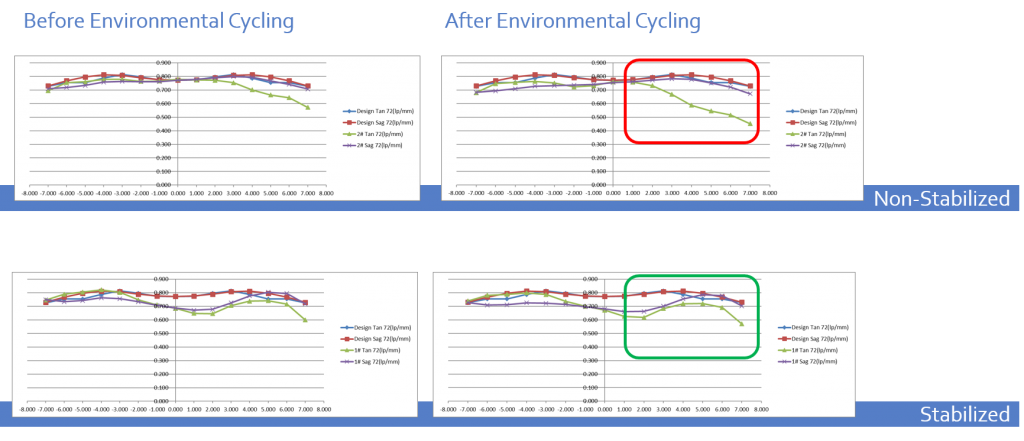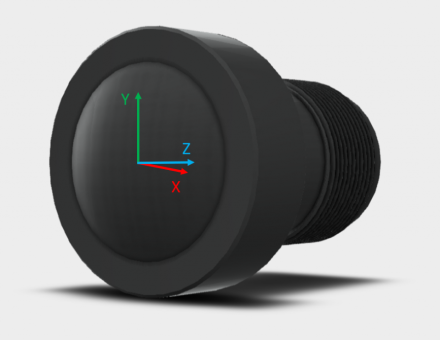A typical lens assembly consists of several lens elements inside a cylindrical barrel. Due to the mechanical clearance requirement, the internal element diameters must be smaller than the barrel internal diameter. This creates potential risks that could result in boresight errors or changes:
- Lens to lens variance of the optical axis due to manufacturing tolerance
- A possible lateral shift of individual elements overtime due to strenuous conditions
The first potential risk (lens to lens variance) can be reduced and even completely mitigated through the use of Active Alignment of the sensor and lens assembly during the manufacturing process. Sunex typically recommends active alignment for imaging requirements of >3 – 5MP or for sub 2um pixel pitch. Pairing a high-quality, precision optic with an imprecise alignment method may not fully realize the performance, especially edge MTF, that the lens itself is capable of delivering on a consistent basis.
The second one is less predictable and depending on the severity could have a devastating impact on certain applications. To eliminate this potential risk for boresight error, Sunex has created an optomechanical design process that allows for risk evaluation on a per-element basis, and developed technologies and processes to “glue” these identified lens elements laterally into the barrel. Boresight Stabilization™ designs are fully compatible with Sunex’s general manufacturing process and deliver on:
- Best-practice kinematic design and mounting of elements
- Superior tolerancing of optical design and between lens elements and mechanics
- Superior assembly and test techniques

To show an example of the positive impact of Boresight Stabilization™ on the overall lens performance in harsh environments, Sunex created a test under the following conditions:
- Two lenses with the same PN, built with the same process, except one lens is boresight stabilized, the other is not.
- Both lenses initially meet all relevant specifications for optical performance, including MTF.
- Both lenses subject to the same Temp/Vibe/Temp/Vibe cycle.
- Both lenses retested for MTF after the test cycle was completed
The below graphs clearly shows that the standard lens had more than twice* the MTF degradation as the Boresight Stabilized™ lens after only one test cycle.

*results might differ for other lens designs or different test procedures
Lenses designed with Boresight Stabilization™ achieve the following goals:
- Enhanced survivability
- Stable boresight (pointing) over shock, vibration, and temperature
- Enhanced MTF stability and repeatability over the mechanical shock, vibration, and temp (The lens stays better, longer and returns to a predictable performance after being subject to environmental extremes)


